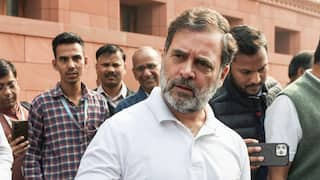History On This Day: Story Of Robert Clive Capturing Calcutta In The Battle Of Plassey
As lieutenant colonel of the British forces, Clive was sent to recover Calcutta from Nawab Siraj-Ud-Daulah.

New Delhi: On this day back in December 1756, Robert Clive captured Calcutta. As lieutenant colonel of the British forces, Clive was sent to recover Calcutta from Nawab Siraj-Ud-Daulah. He took the fortress of Budge Budge with very few casualties at his end.
Clive defeated Siraj on June 23, 1757, in the Battle of Plassey with his 3,000 men dominating Siraj’s massive army of 50,000. The majority of the army was led by Mir Jafar, who defected. Siraj who was on the run after the battle was killed a few days later, on July 2. This victory made Clive the virtual master of Bengal.
Clive, started his career as a writer with the East India Company in Madras and did not have any formal military training. He joined the army as a brevet captain in 1751 and gained prominence after defending against the French Carnatic’s capital Arcot in October 1751. He helped to establish British authority in south India. This helped establish British power in southern India. The Battle of Plassey led to the decisive establishment of the British empire in India.
Robert Clive was the first British administrator of Bengal, who was one of the creators of British power in India. He won the Battle of Plassey and became the master of Bengal and later he reorganised the British colony In his second stint as the governor (1764–67).
Clive was a difficult boy when he was young and he studied in several schools. In the year 1743, at the age of 18, Clive was sent to Madras (now Chennai) in the service of the British East India Company. After reaching Madras in June 1756, Clive immediately got involved in the affairs of Bengal. Hitherto Bengal had been ruled by viceroys of the figurehead Mughal emperor, and it was under their protection that the British East India Company carried on its trade.
Calcutta had come to rival Madras as a trading centre, and its commerce was the most valuable in India. In 1756 a dispute with the British about fortifying the city caused the new nawab (Mughal viceroy) of Bengal, Sirāj al-Dawlah, to attack and capture the fort there. As the news of the fall of Calcutta reached Madras in August 1756, Clive was given command of the relief expedition after a short delay. He set out on October 16, 1756, with 900 Europeans and 1,500 Indians.
Clive captured Calcutta on January 2, 1757, and the nawab was forced to restore the company’s privileges, pay compensation, and allow the British to fortify Calcutta. Clive was determined to take advantage of discontent with the Nawab. He sponsored a new rule to ensure conditions that were agreeable to the company’s trade.
Mīr Jaʿfar, an elderly general secretly hostile to Sirāj al-Dawlah was his candidate. Clive overthrew Sirāj al-Dawlah at the Battle of Plassey on June 23. Only 23 of Clive’s men were killed.






































